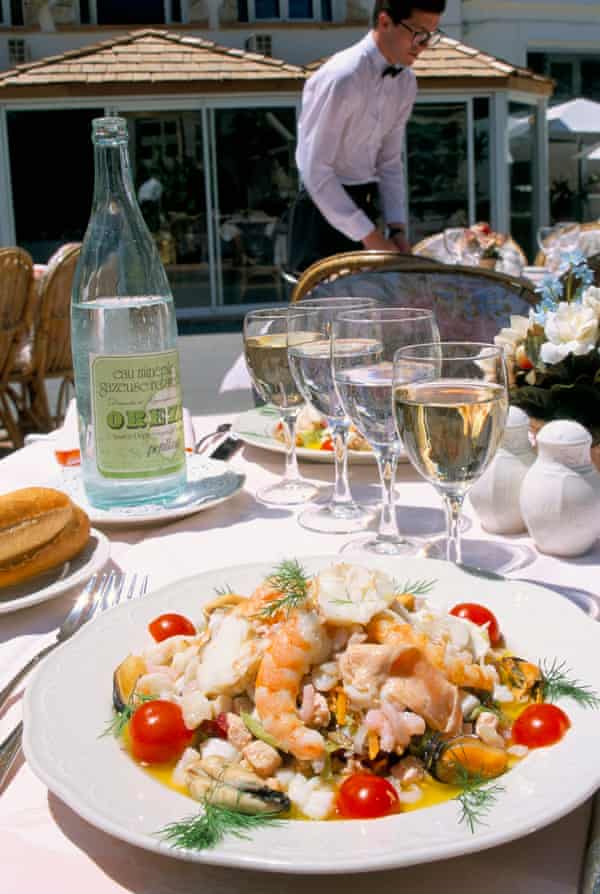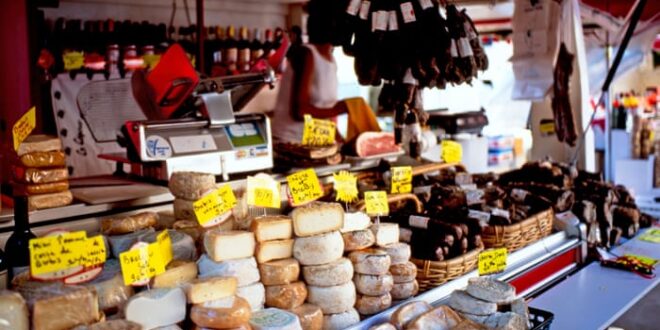If you were to dream up the ultimate foodie destination, you might imagine a place with crystal-clear waters, lush forests, mountains and a reassuringly warm forecast that means every flavour is infused with sunshine. But you don’t have to dream, because the French island of Corsica has all that, and then some.
With more than 620 miles of coastline, Corsica is celebrated for its bounteous seafood; try mussels a la Corse, cooked in the baking juices of another fish, served with chopped lemon and peppers, or a platter of freshly-opened oysters, cultivated, as they have been since Roman times, on the quieter east coast.

In the sea, fishermen find fresh red mullet, sea bream, anchovies, sardines and langoustine. From the island’s rivers and the east coast lagoons come plentiful trout and eels.
Going inland, the secret ingredient that makes Corsica special – and this cannot be understated – is the humble chestnut. Due to the mountainous terrain, typical cereal crops are hard to cultivate, so from Genoese times – spanning from the 13th to the 18th century – chestnut trees were planted plentifully, as the chestnut can be both dried, and ground for flour. There are even two annual festivals celebrating the chestnut, and it seems to turn up in just about every type of food or drink you can imagine. Chestnut flour is used to make all manner of tasty treats, including pulenta (or polenta), fritelli castagnini (chestnut flour fritters), bread and delectable cakes. You’ll find it in ice-cream, biscuits and, perhaps most interestingly of all, in the local beer, Pietra.
Fallen chestnuts also provide a rich source of food for the proliferation of free-range pigs and wild boar, adding a definite deliciousness to their flesh. As a result, charcuterie abounds across the island, the best known being figatellu. A smoked, dried pork liver sausage, it’s often served grilled, or used in winter soups. Also not to be missed are coppa de Corse, a traditional Italian-inspired cold cut from the neck and shoulder of the pig, and prisuttu, a cured ham matured for a minimum of 12 months. For something heartier, a bowl of rich wild boar stew – or civet de sanglier – will keep the wolf from the door. Slow cooked, with more of those chestnuts alongside an array of vegetables that can include onions, garlic, fennel, mushrooms and carrots, it’s simmered with red wine. Other meaty soups and stews include zuppa corsa, a vegetable minestrone in a ham-bone stock; veau aux olives, a stew mixing veal, olives, tomatoes, maquis herbs, and a good slug of white or rose wine; and the popular agneau Corse, roasted lamb with garlic and rosemary.

You can’t talk about Corsican food without mentioning the island’s extraordinary cheeses. Found everywhere, eaten on its own or as an ingredient in other dishes, is brocciu, a ricotta-like cheese made from ewe’s milk and whey. Tomette de chèvre is a strong, full-flavoured goat’s milk cheese, while corsu vecchiu is a semi-hard, semi-mature sheep’s milk variety.
And if you’re craving a pasta fix, fret not, because Corsican culture borrows the best of Italian cuisine too. Most restaurants have at least a couple of fresh pasta dishes on their menus, usually something like ravioli, cannelloni and gnocchi, served in a variety of sauces.
So where’s best to sample all these delights? Most towns have regular, lively markets, such as Ajaccio’s daily one on the Place César-Campinchi, where local producers, from smallholders to cultivators, will proudly talk you through their methods and ingredients, encouraging you to taste and try before you buy.
Throughout the island you will not fail to stumble across a restaurant serving good, freshly-prepared food, from a harbour-side bistro in Bonifacio to a back-street brasserie in Porto-Vecchio. Corsican tradition involves sharing, no hardship when you’re presented with plates piled high with cured meats and cheeses, or towering bowls of mussels and seafood, with no option but for you and your companions to roll up your sleeves and get stuck in, soaking up the juices from various stews and soups with oven-fresh, chestnut flour bread. Loosen your belt, because Corsica really does have some of the best food in the Mediterranean – and you’ll want to try it all.
Find out more information about Corsica at visit.corsica
 Top Naija News – Nigeria News, Nigerian News & Top Stories Top Naija News – Nigerian Newspapers, Nigerian News. topnaijanews is a daily Nigerian newspaper covering Latest News, Breaking News, Entertainment, Sports, Lifestyle and Politics.
Top Naija News – Nigeria News, Nigerian News & Top Stories Top Naija News – Nigerian Newspapers, Nigerian News. topnaijanews is a daily Nigerian newspaper covering Latest News, Breaking News, Entertainment, Sports, Lifestyle and Politics.




